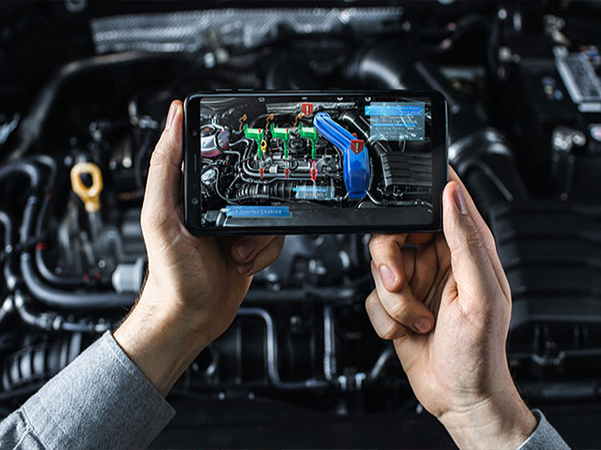
Digital transformation is ushering the manufacturing industry into a new age of speed, knowledge, transparency, and connectedness. While industrial IoT data is making products smarter and processes faster, it’s AR that is making people more productive.
If AR has arrived to aid the industrial workforce, it can’t have come soon enough; the manufacturing industry is facing a looming skills crisis, with millions of jobs expected to go unfilled over the next decade. To stay ahead of the curve, manufacturers need to find a way to simultaneously improve knowledge sharing, retain their aging workforce, and upskill new or seasonal workers.
AR solutions are increasingly accessible; they are also proving their value through extremely effective training and procedural guidance applications. AR immediately makes factory workers and technicians more effective by providing contextual data and instructions to workers, when and where they need it on shop floors or out in the field. By blending the physical and digital worlds into an immersive experience, AR helps people understand and retain complex information much faster. And as a cloud-based solution that’s accessible to users anytime and anywhere, AR makes collaboration and knowledge sharing easier by connecting those inside an office to people out in the field in real-time.
So, what do the nuts and bolts of AR solution look like? Hardware can range from hands-free wearable headsets such as the Microsoft HoloLens or the RealWear HMT-1, to pocket-sized mobile devices or larger screened tablets. Each option varies in cost, usability, and ubiquity, which manufacturers should consider strongly when implementing an AR solution.
AR software is similarly diverse, with solutions ranging from out-of-the-box AR content authoring tools like Vuforia Studio, to shared-view collaboration tools like Vuforia Chalk, to location-specific AR guidance tools like Vuforia Expert Capture. Finding the right combination of AR hardware and software ultimately depends on the use case; one solution may be effective helping line workers assemble products faster, while another may be more useful helping to scale service information globally.
The manufacturers that are getting the most value from AR are using it to solve specific business challenges, such as poor training and communication methods, a shortage of qualified workers, or increasingly complex products. Some of the most commonly demonstrated use cases for AR in manufacturing include maintenance, repair, and overhaul (MRO), training, and sales and marketing.
If companies want an example of a successful AR program, the good news is that those case studies are increasingly available, across a variety of industries. Life Sciences leader Sysmex is using AR to improve equipment uptime and resource utilization by guiding field technicians with step-by-step 3D work instructions. Howden, a major industrial manufacturer, is leveraging their existing 3D models to deliver AR experiences that incorporate IoT data for safer, more productive workers. Meanwhile, Cannondale is using AR to differentiate their bicycles and deepen engagement with riders. Many others are empowering workers, improving efficiency, and engaging customers using AR solutions built with PTC Vuforia. Are you ready to join them?
If any of these challenges are familiar to you, implementing AR at your organization might be easier than you think. It’s very likely that you already have the resources you need to get started, including subject matter experts and existing CAD and engineering data. Download this free white paper to learn how can create valuable AR experiences today.
Greg is an avid blogger interested in industrial innovation, technology, and the intersection between the two. As a Content Marketing Specialist for PTC, Greg is excited about how things like virtual and augmented reality, the internet of things, and predictive analytics are shaping the future of manufacturing.
©Copyright 2025. All rights reserved by Modelcam Technologies Private Limited PUNE.